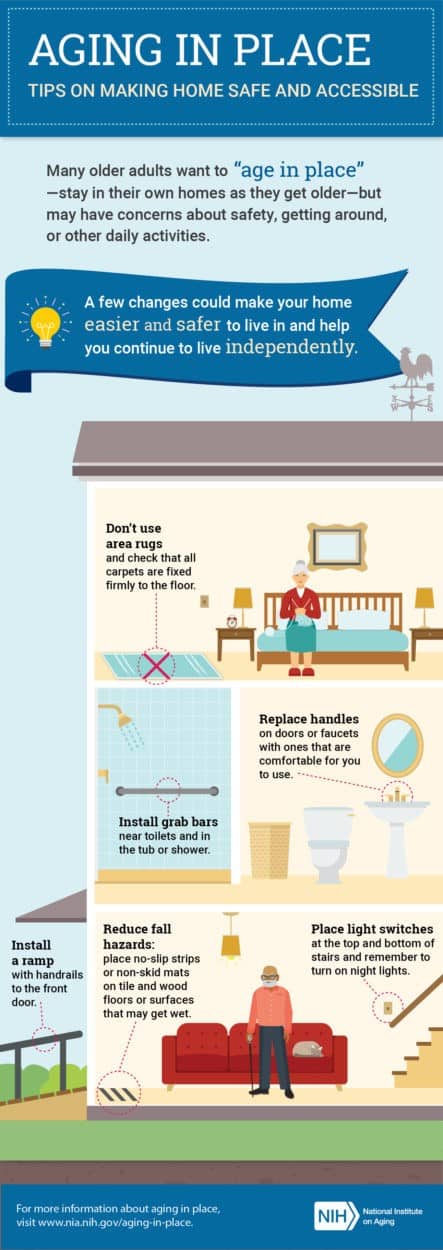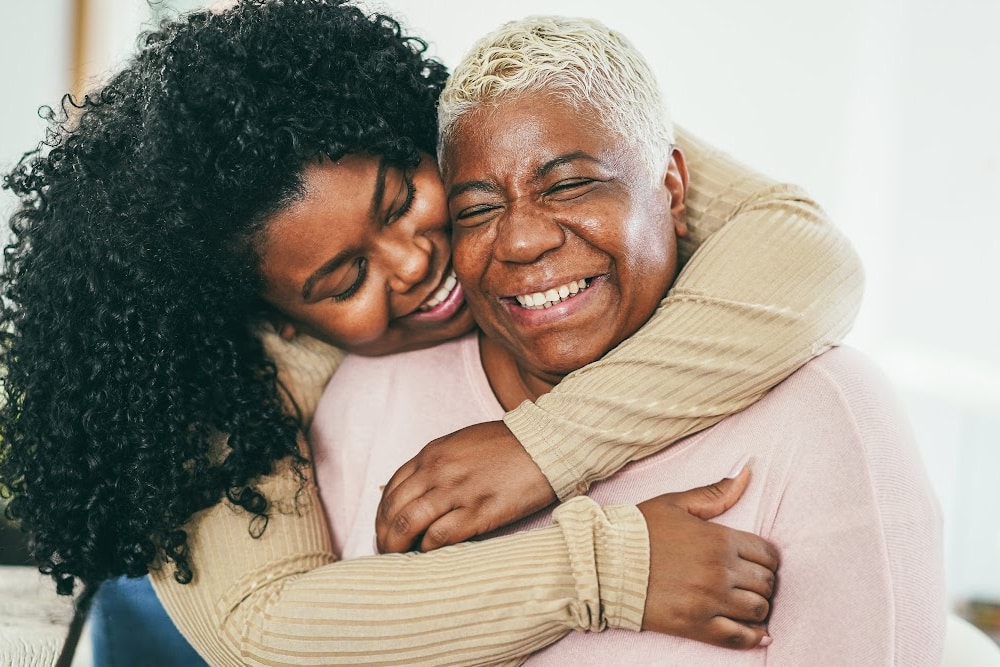[Source: U.S. Census Bureau]
The U.S. Centers for Disease Control and Prevention defines aging in place as “the ability to live in one’s own home and community safely, independently, and comfortably, regardless of age, income, or ability level”
Aging is a fact of life and one which will eventually come for all of us and more and more people are choosing to stay in their homes rather than move into specialist retirement or elderly living accommodation. Making adaptations to your home can help you to remain in your own space for longer and reduce your chances of accident or injury, so whether you are noticing that a loved one is needing a little more help around the house or want to ensure that you put things in place for your own future, here are 9 home adaptations that can help to make your home more comfortable.
Install an outdoor lighting
Installing an outdoor light can help you to enter and exit your home in the dark, ensuring that you can see the steps and pathways. and easily find your keys. Position the light near to the door, or if you have a long pathway consider installing more than one to light your way. To make sure that the light comes on automatically, use motion detectors that will detect your presence and turn on and off automatically to save energy.
Install a front door intercom or video system
A door entry intercom system can help to improve your home safety by allowing you to speak to the people at the door before choosing whether to unlock it and let them in. By placing the intercom system near to where you spend the majority of your time during the day, such as by the sofa, you can also open the door without needing to get up each time. If you are a little hard of hearing then you can now even get intercom systems with cameras so you can see as well as hear who is at your door.
Install motion light sensors
Poor lighting throughout your home could be responsible for many unnecessary accidents. Consider installing motion light sensors that will activate when you are in a room and turn off when you leave. These can be particularly helpful if you use a walking aid and do not want to take your hands from it when turning on and off the light, or if you keep forgetting to turn your lights off resulting in a hefty electricity bill.
Install a double banister or stairlift
Stairs can become problematic as you age so consider installing a banister to aid you up and down. For even greater mobility you may wish to explore stair lift options for your home which make climbing even the most lengthy stairs an effortless process. Depending on the size and layout of your home it may even be possible to install a wheelchair lift to help you navigate between floors.
Consider a bed with risers or a lift chair
For some people, getting up off the sofa or out of bed can be tricky, but this can be easily solved by replacing your old bed or sofa with one which has raisers installed. There are even wonderful comfy recliners with built-in risers to aid you in standing. These can help to gently move you into a standing position when you wish to get up.
Add rails to your bathroom
Bathrooms can be tricky to navigate at the best of times and even more so as we age. The easiest way to make your bathroom more accessible is through the installation of rails to help you get up and down and provide an additional degree of stability as you move around on the slippy surfaces. Popular places to consider adding rails are by the toilet, next to the bath and near to the shower.
Consider a walk-in bathtub
Getting in and out of the bath can be difficult at the best of times, let alone when your mobility begins to decline. Side opening baths remove the need to step over the side and ones with inbuilt chairs can help if you struggle to get up and down.
Purchase some kitchen gadgets
In the kitchen, there are now a number of nifty gadgets designed to help people continue to live their life as normal. A kettle tipper can help to take the weight of a full kettle and stop any nasty accidents, and an assistive tin opener and jar opener can help when fingers and joints are less strong than they used to be.
Ensure your smoke alarms are wireless
Finally, to ensure that you are protected even if you forget to change the batteries, make sure that your smoke alarms and carbon dioxide alarms are wireless. You can even have them remotely monitored to ensure a quick response to your home in the event of an emergency.
For more information and tips for remaining independent and healthy in your home as you age visit Aging in Place






